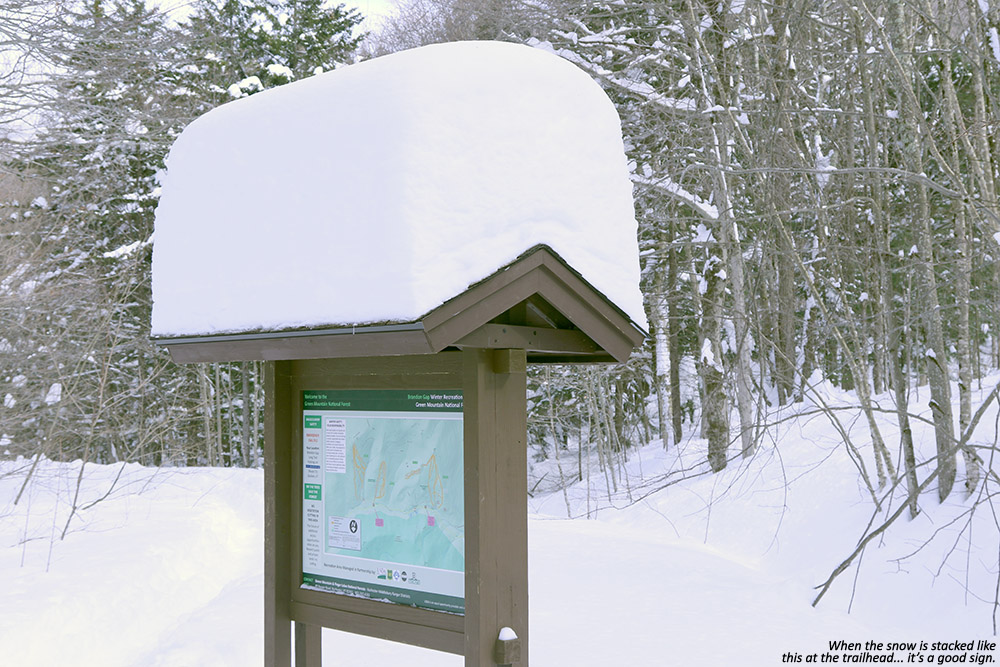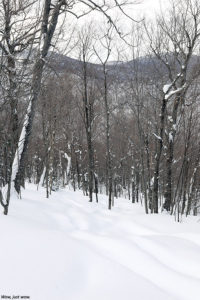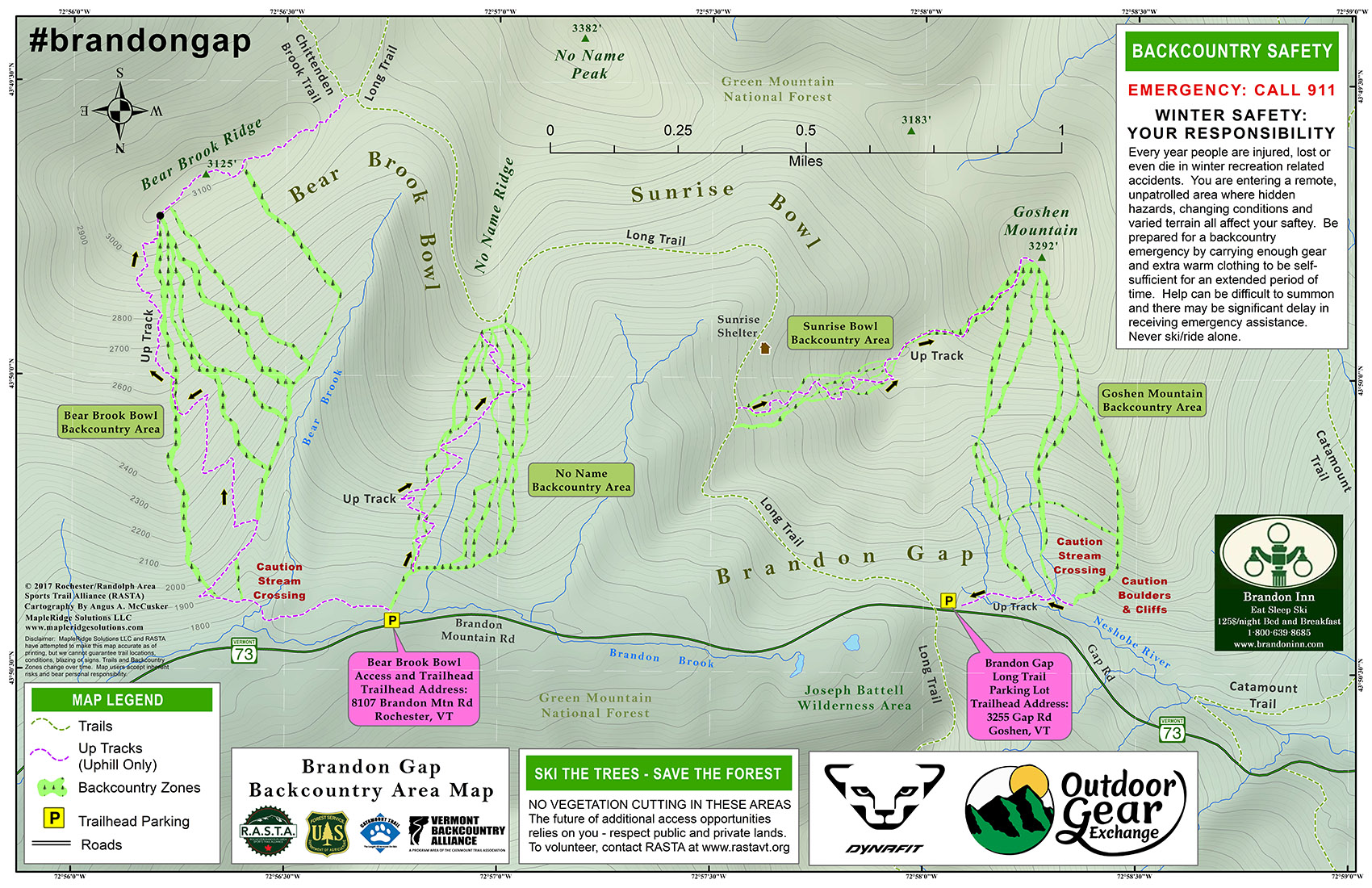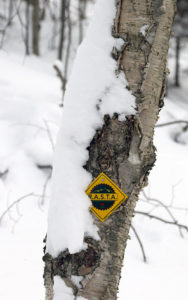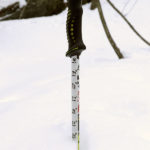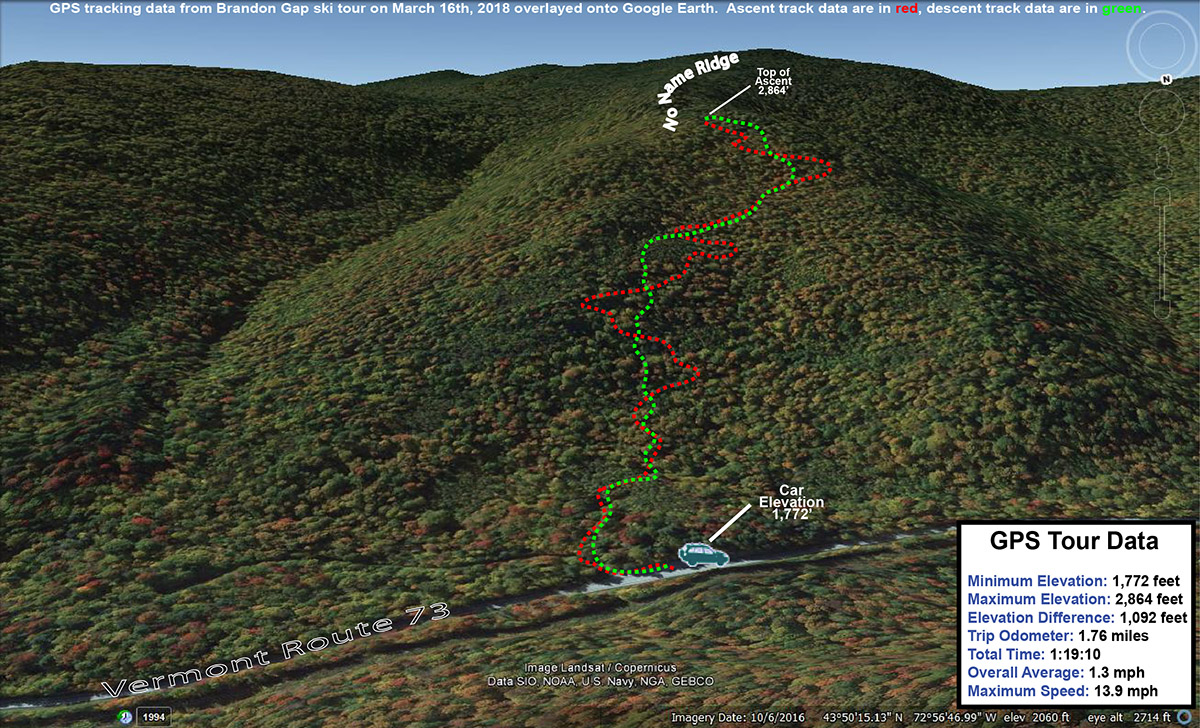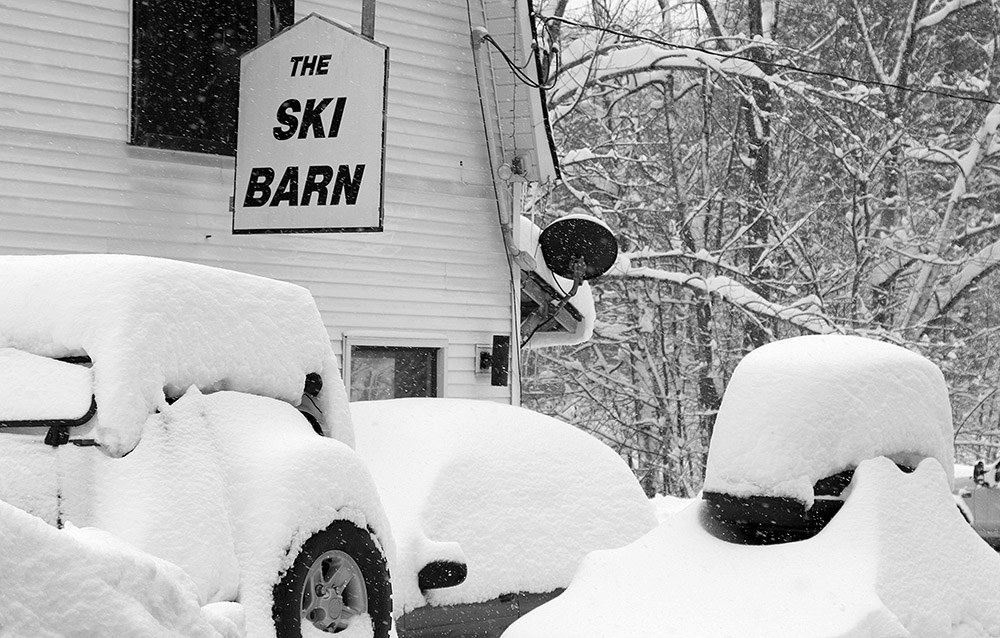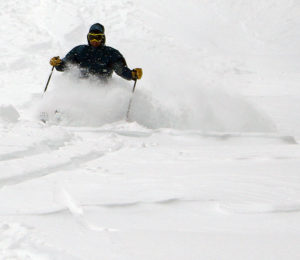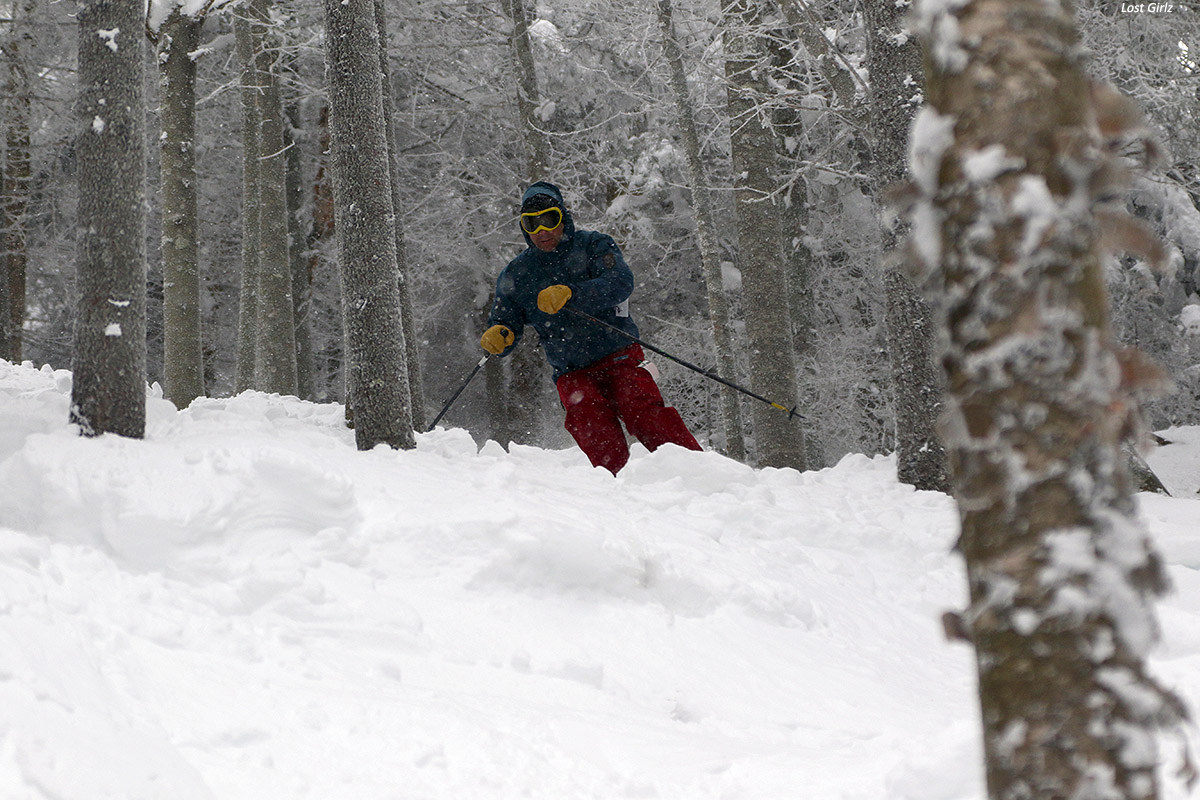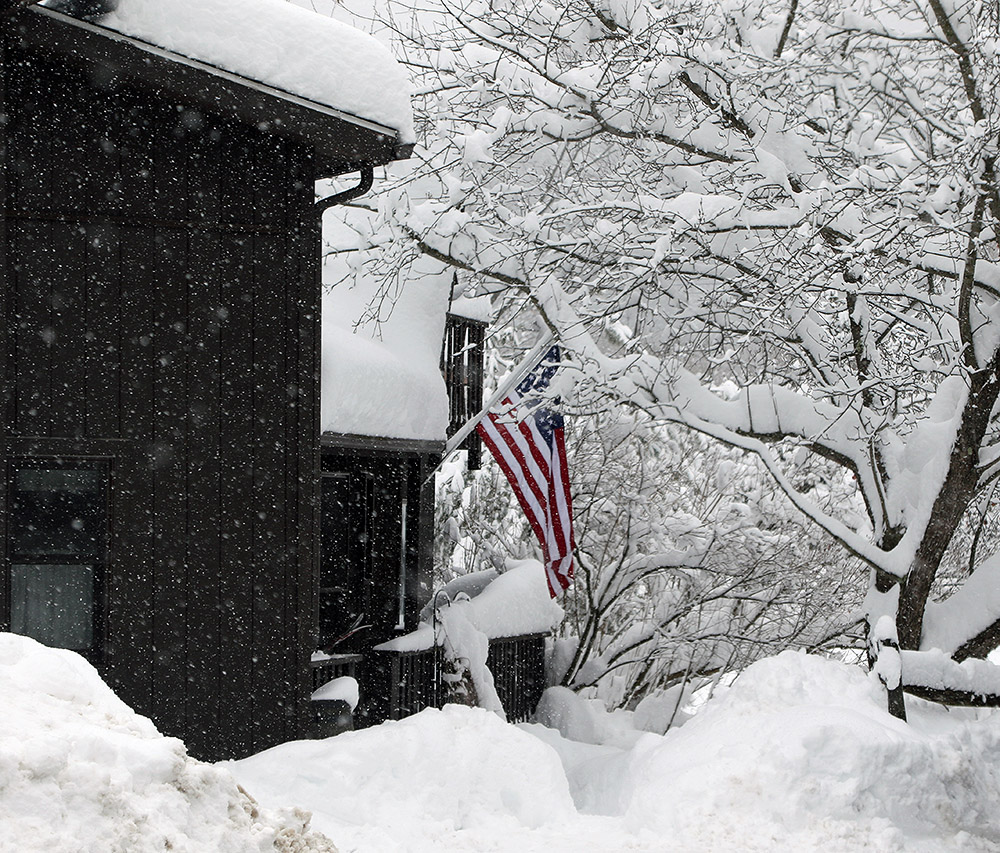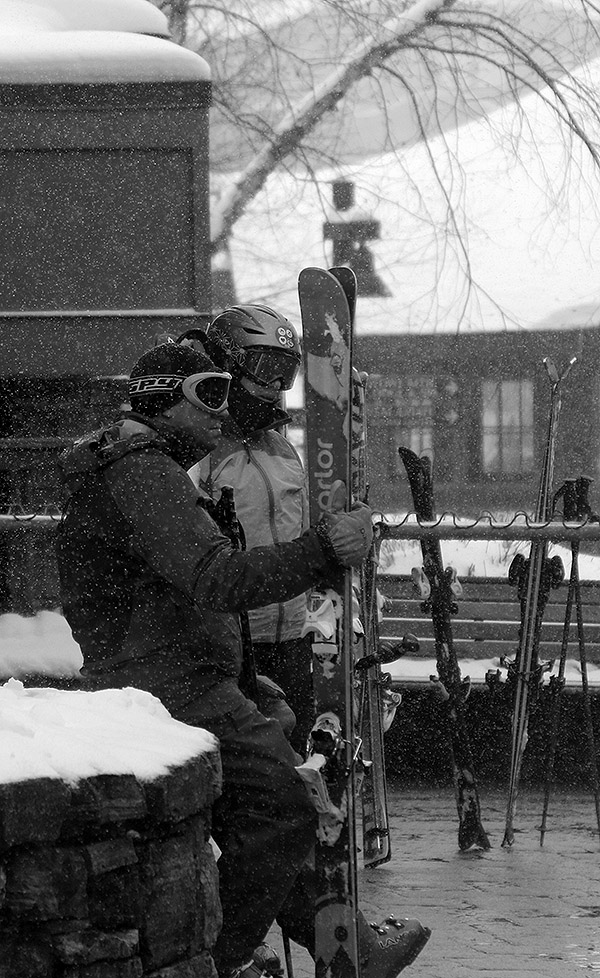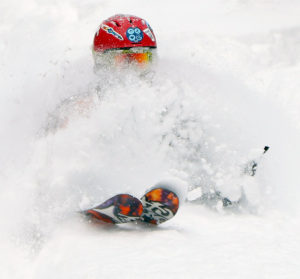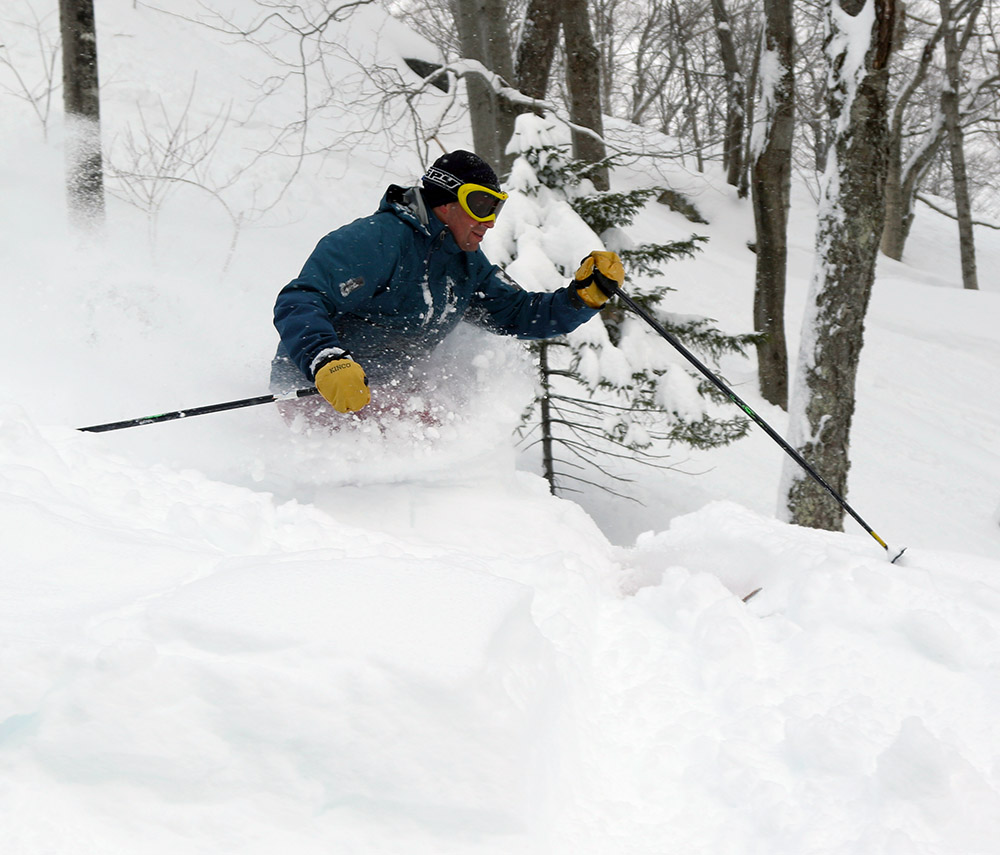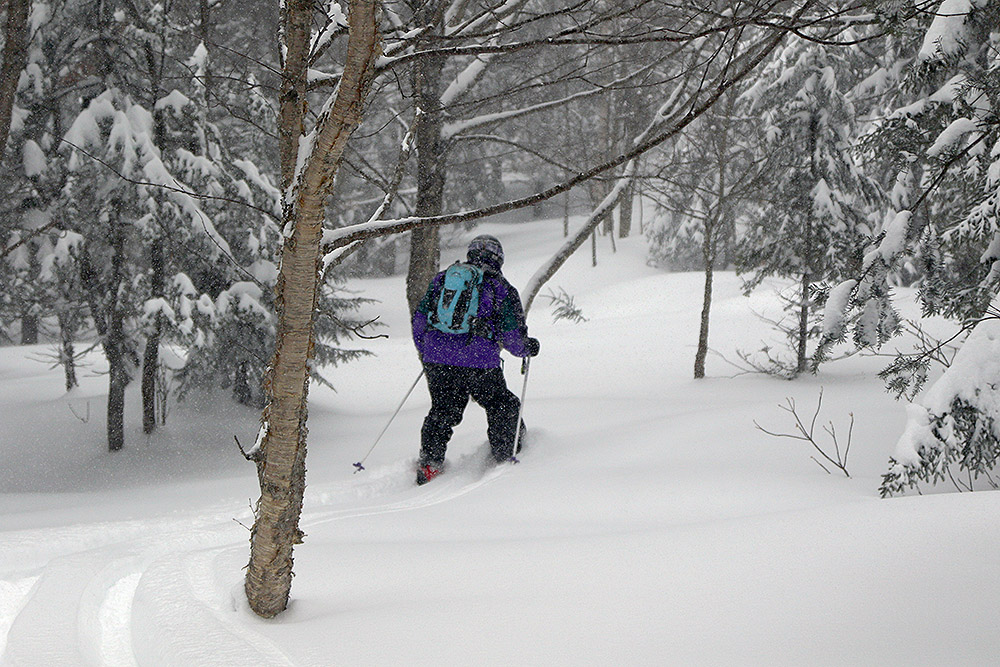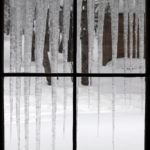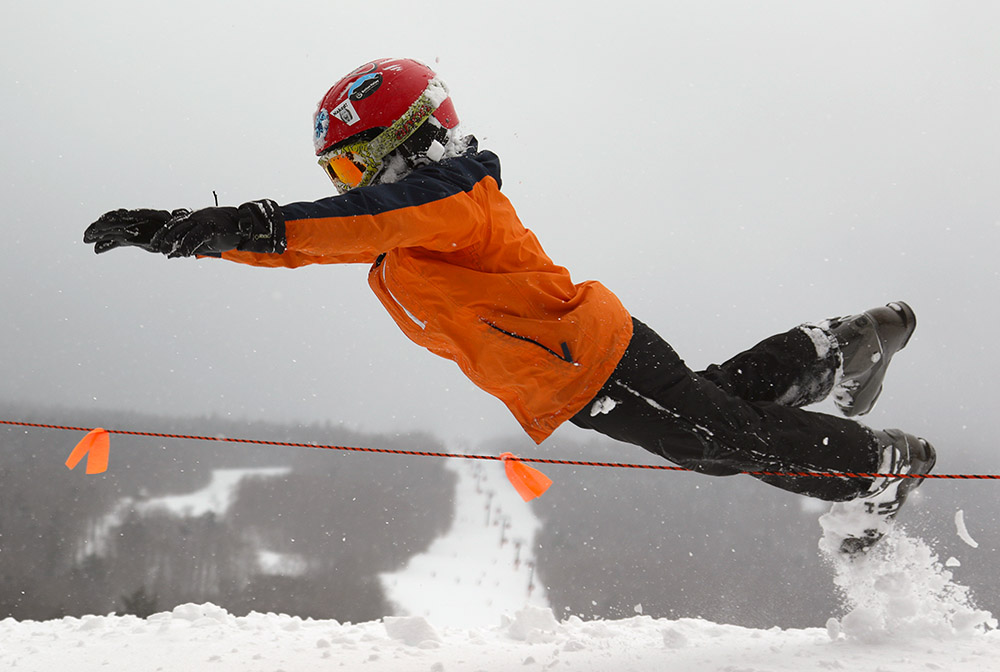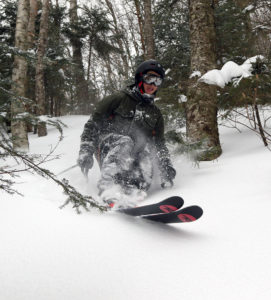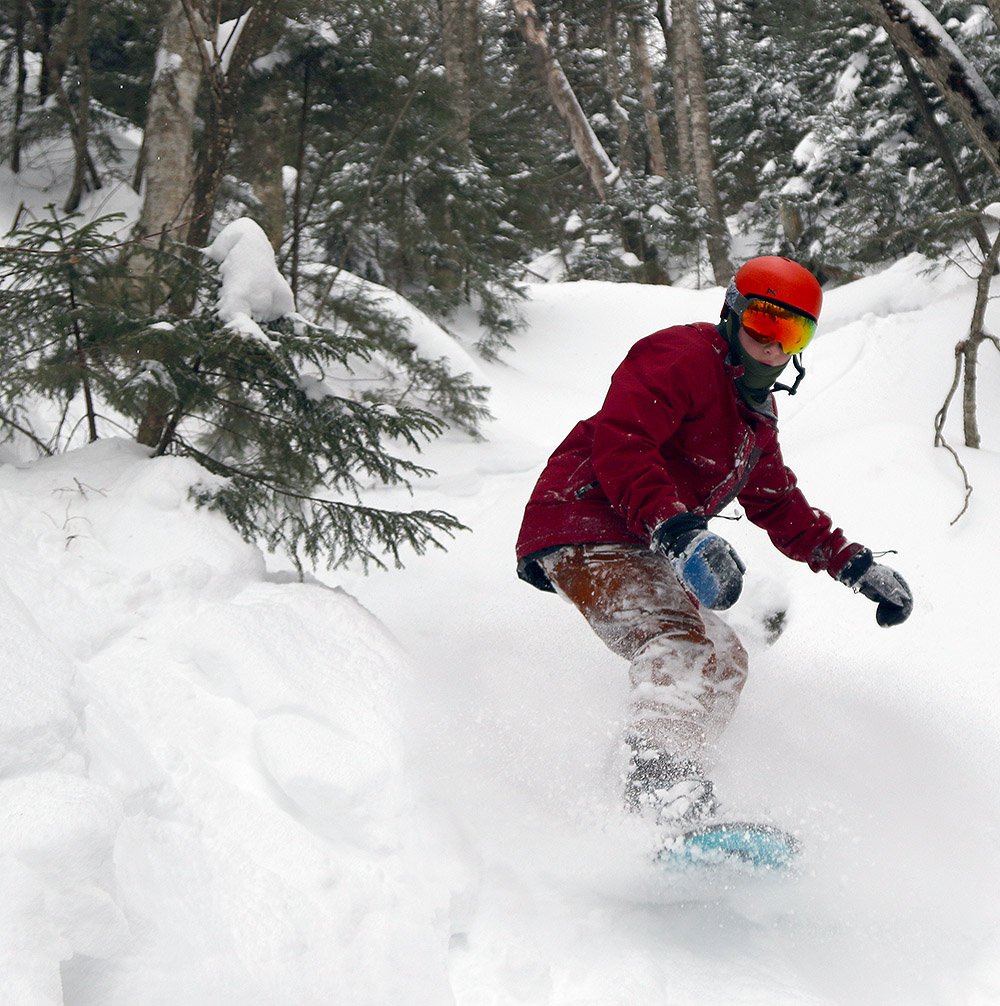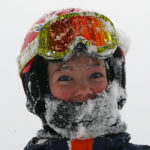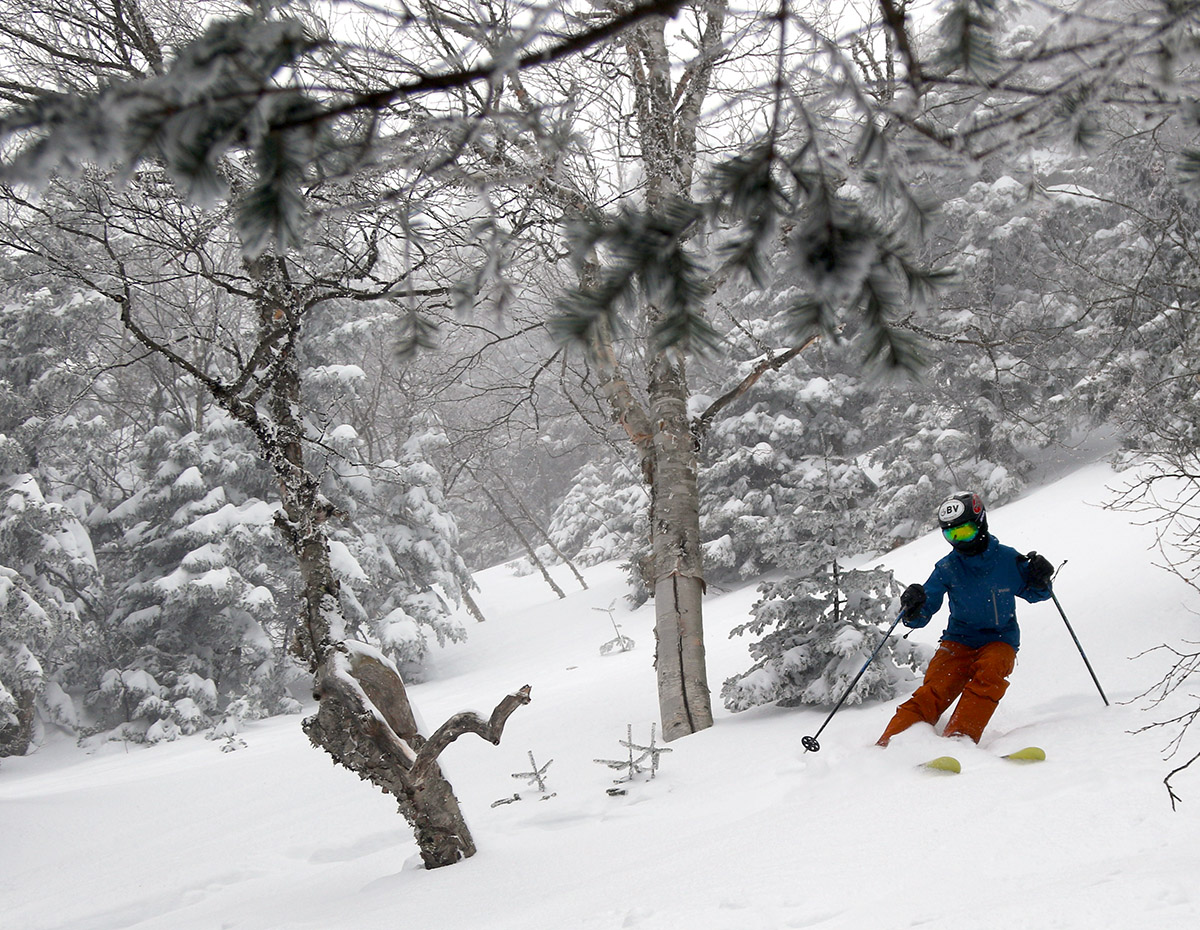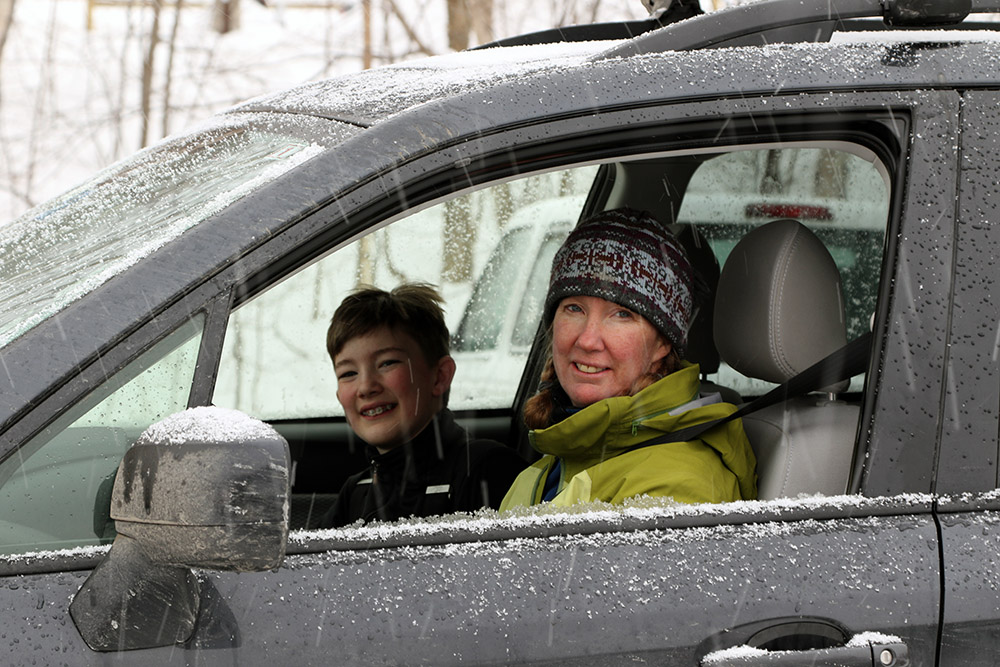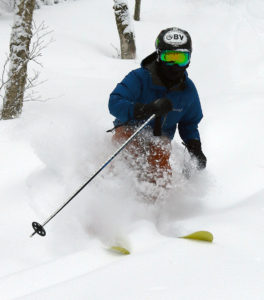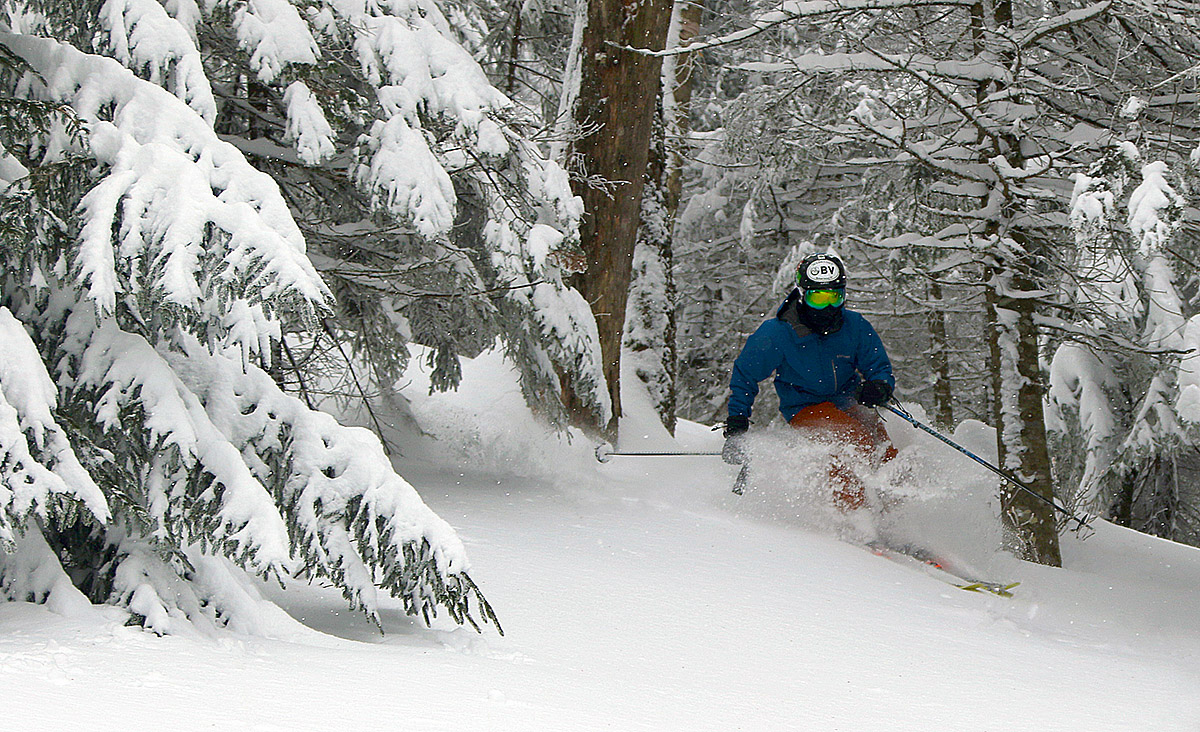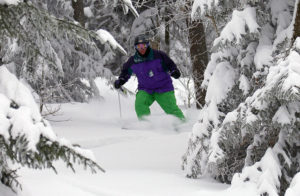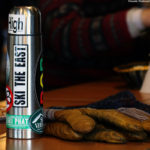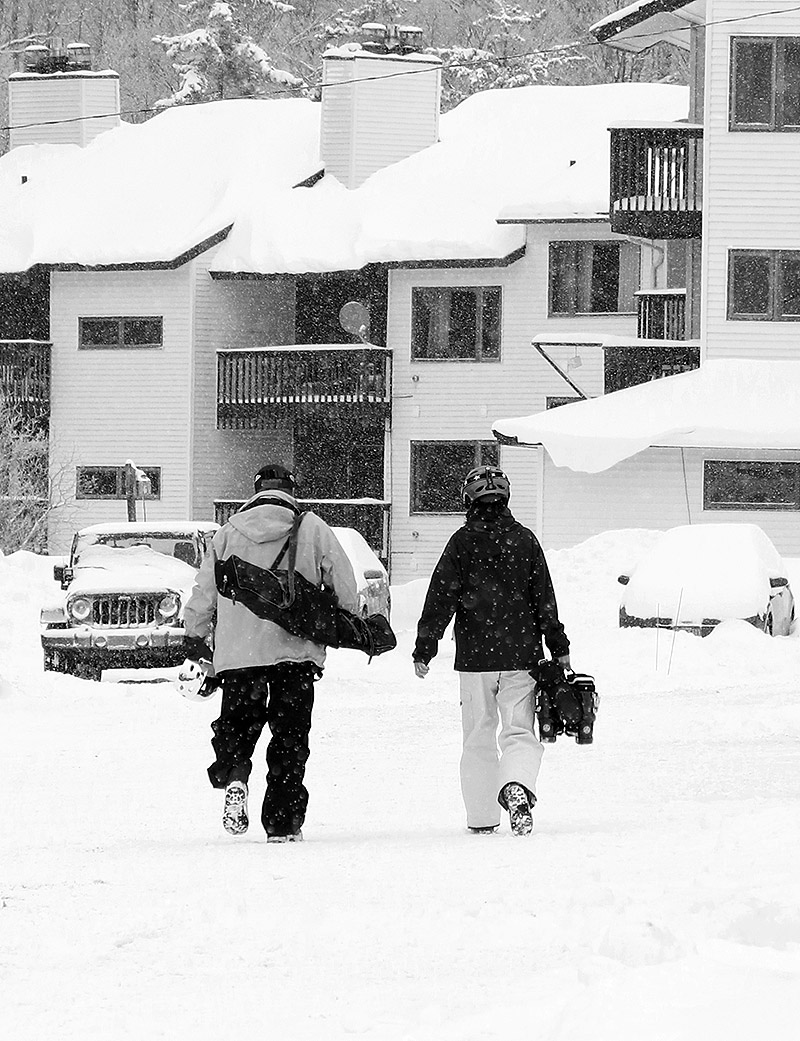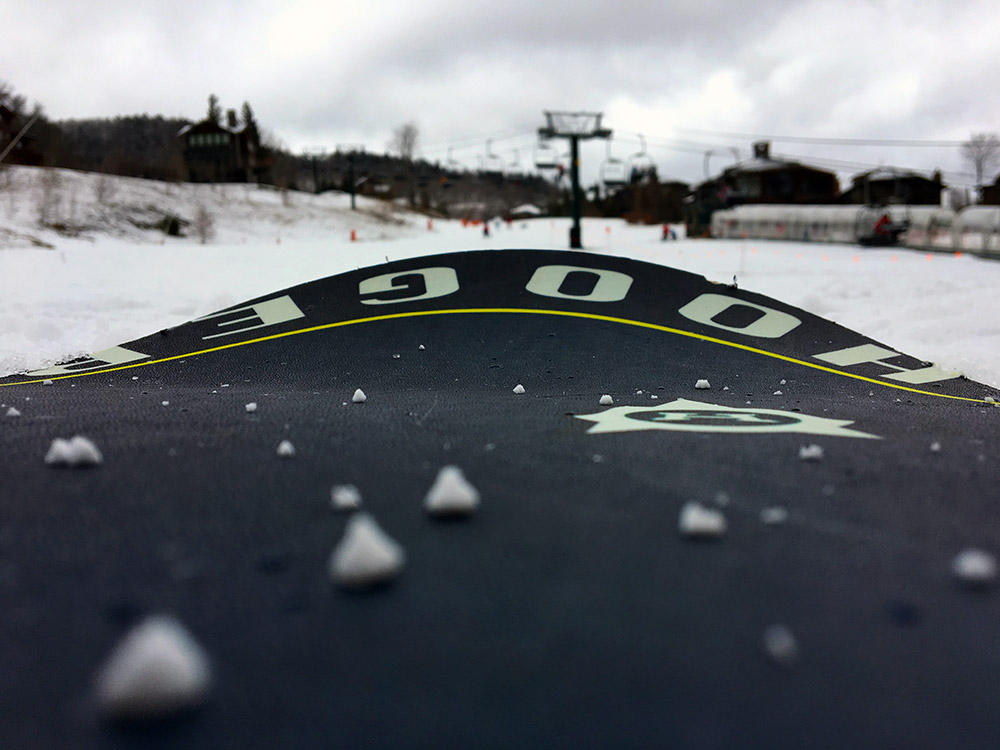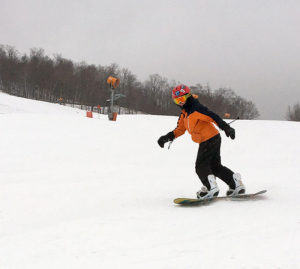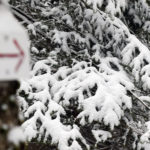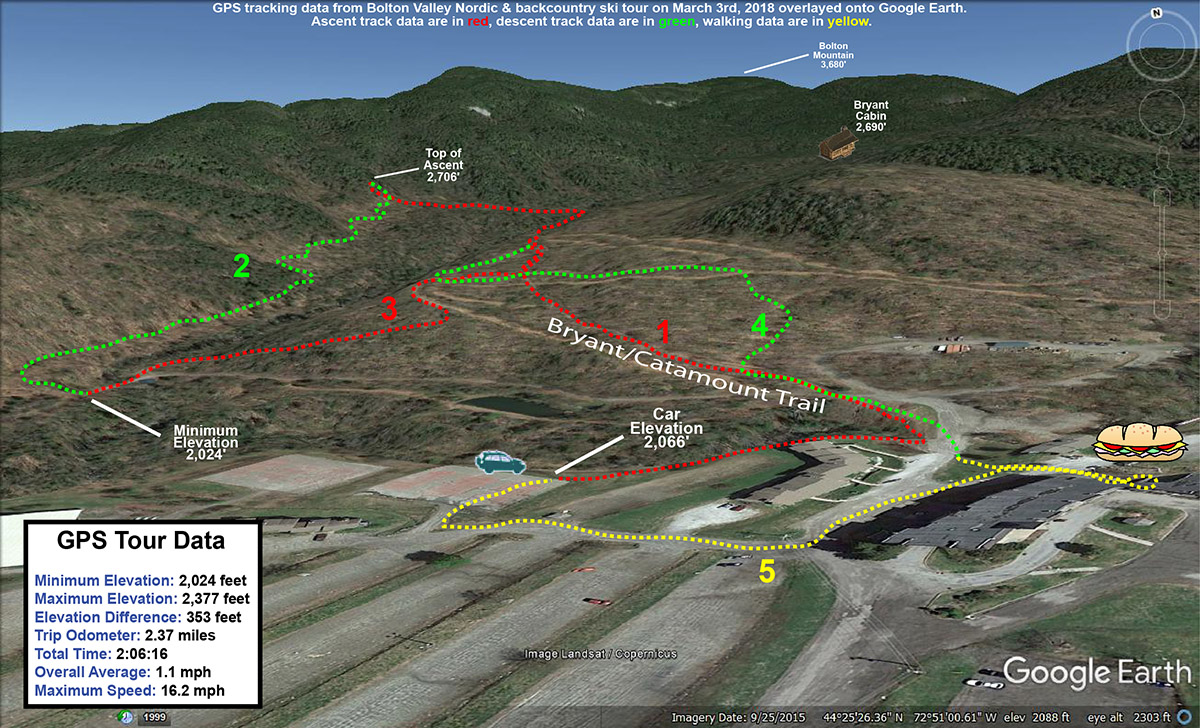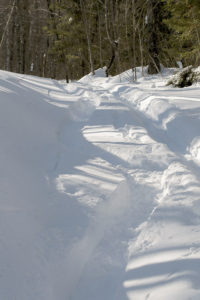
Wind chills were forecast to approach -30 F today on the upper elevations of Mt. Mansfield at Stowe Mountain Resort, so E did a “soft cancel” of our BJAMS ski program. The program was still on, and families could go if they wanted to, but no coaches were required to go, and students wouldn’t have to deal with those potentially frigid temperatures.
Although I was glad to not have to battle the nasty wind chills up in the higher elevations, it was still a gorgeous late-winter day out there, so I thought about heading out for a ski tour on something local, relatively low elevation, and sheltered from the wind. Eventually, an exploration of the lower elevations of the Woodward Mountain Trail came to mind. The base of the trail is just a couple miles from our house in Waterbury, and with the healthy snowpack that extends all the way to the bottom of the local mountain valleys, the ski conditions there should be outstanding.
The Woodward Mountain Trail is quite a route, running six miles and dropping over 2,500 vertical feet in elevation. The traditional way to ski the trail is to spot a car at the VAST parking area (450’) at the bottom on Little River Road near the Waterbury Reservoir, then drive up to Bolton Valley Resort and use the Vista Quad to get to the top of Vista Peak (3,150’). From there, you ski southward along the ridge between Vista Peak and Woodward Mountain, before descending eastward off the flanks of Woodward Mountain itself down to Little River Road in the Waterbury Reservoir and Little River State Park area. I’ve skied the upper elevations of the trail before, but I’ve heard route finding for the ending (and middle for that matter) portions of the trail can get a bit tricky. At some point it would be great to get family and friends together for a full run of the trail, so my goal with today’s outing was to orient myself to the twists and turns at the bottom of the trail to hopefully make that experience a bit more efficient. And with the great snowpack and plenty of powder out there, I hoped to get in some good turns in the process.
“…my goal with today’s outing was to orient myself to the twists and turns at the bottom of the trail to hopefully make that experience a bit more efficient.”
I used my copy of David Goodman’s classing backcountry guidebook “Backcountry Skiing Adventures: Vermont and New York” to get myself oriented with respect to the lower regions of the route. His book has a nice description of where to park, as well as a topographic map with the route outlined. The guide is excellent, with just one problem in my case – the guide is built for following the trail down, so it’s not perfect for guiding you up from the base of the trail if you want to try that approach. In any event, with the map from the guidebook and my GPS in hand, I knew I’d be able to orient myself reasonably well to what the bottom of the trail held in store, and I’d always be able to come back again if necessary on a future trip with my own first experience in hand.
Temperatures were probably around 20 F when I parked at the VAST lot on the west side of Little River Road. There were a few cars there, most with snowmobile trailers of course, although one car looked like it might be backcountry skiers waiting to pick someone up. Starting from the parking lot, you’re immediately on the VAST trail, and it climbs a steep pitch before leveling out and going through some fields along the power line leading up to the dam. It was easy to see from the map in the guidebook that this part of the trail is a bit circuitous – you’re doing a big loop that doesn’t immediately bring you toward the rest of the Woodward Mountain Trail. This is due to the layout of the VAST trails, but with the topography of the ridges, valleys and streams down there, you’d probably just waste a ton of time trying to break trail through the snow if you wanted to follow more direct route from the parking area anyway. It’s hard to put a price on having a packed, well-marked trail to get you through the backcountry, even if the route is a bit indirect. The energy-saving and route-finding efficiency of having an established packed trail are simply huge. I was a bit dismayed to find that there was one fairly substantial downhill section (which of course means uphill on the way out) on the route in. I’m talking about a substantial enough slope that you’re likely going to have to take off your skis and walk, or put your skins on to deal with it.
After 0.9 miles on the well-packed VAST trail, I came to a T junction. The trail I was intersecting was part of the VAST system, but it was also a road, Woodard Hill Road. It had actually been groomed (and apparently even plowed) down in that area, so the snow cover was a bit thin in spots. I headed upward and to the right on Woodard Hill Road, which was the obvious route to take based on the guidebook map. I passed a couple of hunting camps on the left, and eventually at 1.75 miles into the route I came to a gate that seems to be the one indicated on David Goodman’s route. This is where the utility of the map in his guidebook broke down a bit for the ascent. His route appears to be shown passing through the gate, but it’s also shown staying to the south of the main drainage in that area. If you go through that gate, you’re crossing a bridge to the northerly side of that drainage, so those two pieces of information don’t line up. On the south side of the drainage there is a clearing that had seen some snowmobile activity, but I didn’t see any obvious ski tracks coming down from there to suggest it was near the Woodward Mountain Trail.
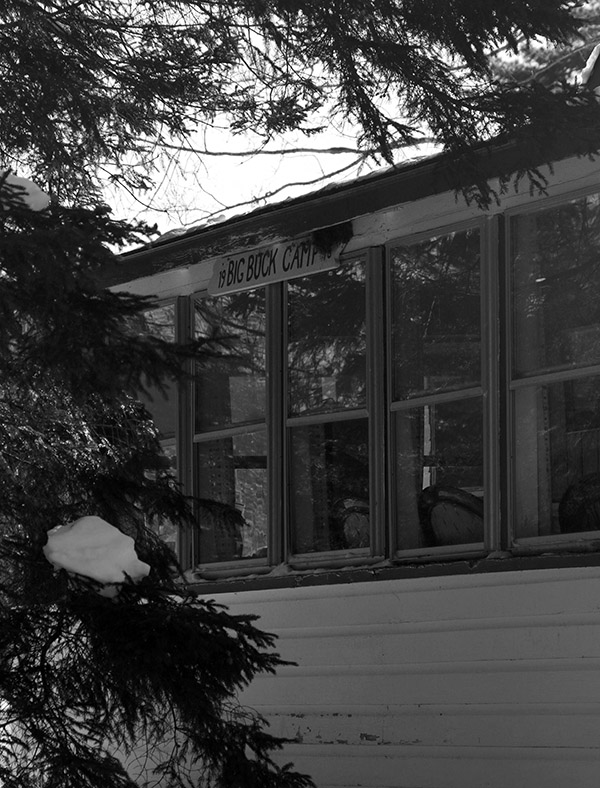
I decided to play it safe on my first look and simply follow the VAST trail through the gate to see if any obvious trails branched off from it. The “safe” aspect of this choice was that I could continue to follow a well-packed, well-marked trail for a while, wherever it was going to take me. At 2.65 miles and an elevation of ~1,750’, I hit the local peak of that VAST trail and hadn’t seen any obvious trails converging on it, so it was time to see what potential the clearing on the other side of the drainage held. I de-skinned and switched to descent mode, and actually had some fun turns in the terrain off the sides of the VAST trail.
“At the very start of my tour down around 450’, the powder was generally 8 to 12 inches deep, but up in the 1,500’ to 2,000’ range where I topped out it was in excess of 20 inches deep. So there were a lot of good turns today at all elevations.”
Coming back down to the gate and bridge area, I headed up into the clearing and could see what had to be the outlet of the Woodward Mountain Trail. The clearing was full of powder, and the reason I hadn’t seen any ski tracks coming out among the snowmobile tracks was simply due to the fact that the last person to use the trail had done so before our recent bout of snowfall had stopped. Once I looked up the trail, I could see that there was an obvious ski/skin track. I put my skins back on and started up the trail. Fortunately, only about 6 to 7 inches of light fluffy snow had accumulated since the last person’s track, so breaking trail wasn’t really too much of a chore. I ascended for a bit within what my schedule allowed, and then had a nice ski back down that section of the trail with some smooth powder turns.
Back at the VAST trails, I descended until I hit the VAST stop sign at the junction of the final leg back to the parking lot. I was reading Ski Maven’s report of her trip on the Woodward Mountain Trail, and it sounds like her group went right through this junction, which left them at the base of Woodard Hill Road about a mile from the parking lot where they had spotted their car. This meant that they had to walk that distance back on Little River Road to get to where they’d parked. Froom that VAST trail junction though, it’s really a short downhill jaunt (just a couple tenths of a mile) to get to the base of Woodard Hill Road. This would actually be a much better place to park a car for finishing the Woodward Mountain Trail. Unfortunately, there’s not the expansive VAST parking area that you get following the other route, but I’ve seen cars parked down at the base of Woodard Hill Road, and I’m sure that’s why. I can tell you, having returned the 0.9 miles to the main parking lot on my tour today via the standard route in the guidebook, with its one substantial uphill and extensive flat sections, that continuing down on Woodard Hill Road would be tremendously more fun and efficient. It shortens the travel at the end of the route by almost a mile, and it’s all downhill. Even if parking isn’t available at the bottom of Woodard Hill Road, and you had to park at the VAST lot, you could still have everyone in your party continue that way and have one strong member follow the regular route and pick the rest of the party up at the road. It would honestly give people a much more enjoyable finish to their tour.
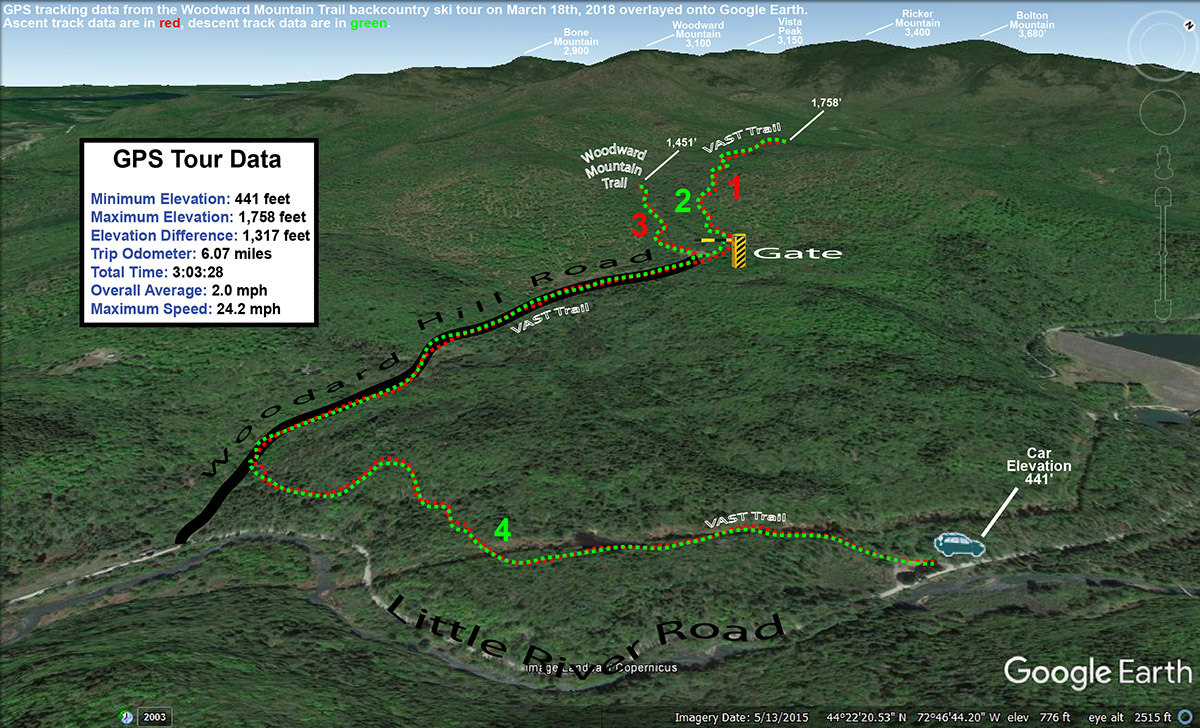
At the very start of my tour down around 450’, the powder was generally 8 to 12 inches deep, but up in the 1,500’ to 2,000’ range where I topped out it was in excess of 20 inches deep. So there were a lot of good turns today at all elevations. At some point I’d like to get to the middle portions of the Woodward Mountain Trail, but I’ve now learned a lot about the layout of the upper and lower sections, and would definitely feel comfortable guiding people in those areas. The middle portion of the route is supposed to have a lot of fun glades though, so I can’t wait to check those out.




